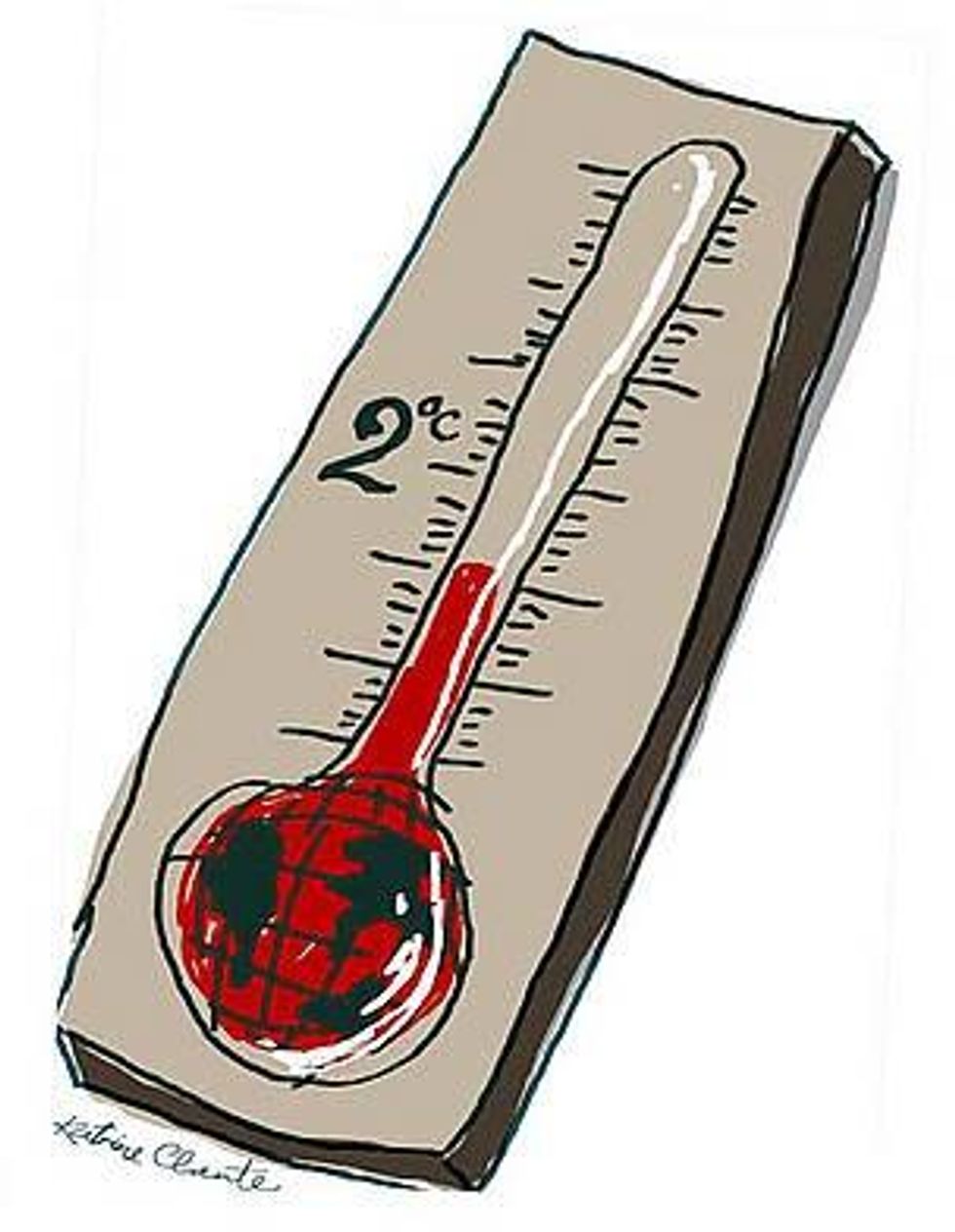n his "To Be or Not to Be" soliloquy, Shakespeare's Hamlet eloquently presents each of us with an opportunity to wrestle with the timeless question of how to respond to the slings and arrows of life's outrageous fortunes.
With today's release of the Summary for Policymakers of Working Group I: The Physical Science Basis, the Intergovernmental Panel on Climate Change's (IPCC) Fifth Assessment Report (AR5) presents us with a very different opportunity to wrestle with our collective response to the slings and arrows of unabated carbon emissions on our warming planet. To be sure, the formal language of the IPCC is far less eloquent than Shakespeare's, but the authoritative and cautiously-written climate science synthesis provokes us to confront profoundly important questions - questions that are hugely time-sensitive, not timeless.
Much media attention in the lead-up to the release has focused on questions over the pace of warming during the past decade. But the most fundamental questions that the IPCC can inform and motivate us to address are not about current changes, driven largely by past emissions - they are about how the emissions choices we make today and in the near future will affect the scale of warming and climate disruption that our generation imposes on generations to come.
Most often, the question gets framed as "will we stay below 2degC?", that is, will we reduce emissions swiftly enough to keep global average surface temperatures from rising to 2 degrees Celsius (3.6 degrees Fahrenheit) above pre-industrial levels? Signing the Copenhagen Accord in 2009, world leaders agreed to keep temperature increases resulting from heat-trapping emissions to less than 2deg C, a target aimed at limiting dangerously disruptive climate impacts. A policy target informed by science, "2deg C" is the formally codified benchmark, the line in the sand by which nations have agreed to measure our collective success in providing generations to come with a secure climate future.
The IPCC's Summary for Policy Makers (SPM) tells us that global average surface temperatures have risen about 0.85deg C since 1900. It concludes that "cumulative emissions of CO2 largely determine global mean surface warming by the late 21st century and beyond" - in other words, the principal driver of long-term warming is total emissions of CO2. And it finds that having a greater than 66% probability of keeping warming caused by CO2 emissions alone to below 2deg C requires limiting total further emissions to between 370-540 Gigatons of carbon (GtC).
At current rates of CO2 emissions (about 35 GtC per year), we will hurtle past the 2deg C carbon budget in less than 15 years.
Future temperature change is projected comparing results of multiple global climate models using four "Representative Concentration Pathways (RCP's)" - standardized scenarios of possible future concentrations of heat-trapping gases, aerosols, and other human drivers of climate change.
The SPM draws modest direct attention to some of the IPCC's findings most relevant to the 2deg C policy target. Table SPM2, for example, projects temperature changes to the end of this century (2081-2100) relative to a 1986-2005 baseline, rather than to the pre-industrial baseline upon which the 2deg C target rests. But one can draw upon the information within the table's footnote, which quantifies mean projected warming between 1850-1900 and 1986-2005 as 0.61deg C to assess warming relative to pre-industrial levels more directly. More in-depth information will be forthcoming in Chapter 12 of the full report, due out next week.
Global carbon dioxide emissions are currently tracking above the highest concentration pathway (RCP8.5), a pathway that the IPCC projects will bring global average surface temperatures well above 2deg C by mid-century and above 4deg C by 2100. Only projections following the lowest concentration pathway (RCP2.6) result in a mean increase in global average temperatures below 2deg C.
There are uncertainties around these temperature projections, of course. The SPM concludes that "global surface temperature change for the end of the 21st century is likely to exceed 2 degC for RCP6.0 and RCP8.5 and more likely than not to exceed 2deg C for RCP 4.5." And, importantly "warming will continue beyond 2100 under all RCP scenarios except RCP 2.6".
Can we transition swiftly to a pathway akin to RCP 2.6? Doing so would require global carbon dioxide emissions reductions of 50% below 1990 levels by 2050 and may well require sustained globally net negative CO2 emissions, i.e. net removal of CO2 from the atmosphere in the second half of this century. Some have proposed that this might be achieved by both dramatically reducing carbon emissions, and coupling large-scale expansion of bioenergy with carbon capture and storage (CCS).
Beneath its cautious prose, the IPCC report firmly highlights the urgency of our challenge. The science itself does not prescribe specific actions. And the IPCC steers clear of assessing the relative likelihood that political will and policy choices will lead us to follow more closely along one concentration pathway or another. And yet - the IPCC report's findings make clear that with each passing year of continued high emissions, the prospect of keeping temperatures from rising less than 2degC through emissions reductions alone will become ever more vanishingly small. They challenge us to both redouble efforts to aggressively reduce emissions and to begin the hard work of preparing now to manage the risks of a world that may warm well in excess of 2degC within this century.
Look for more insights from the IPCC Working Group II report (Impacts, Adaptation and Vulnerability) due out next March and the Working Group III report (Mitigation) slated for release in April.



 This post is part of a series on
This post is part of a series on